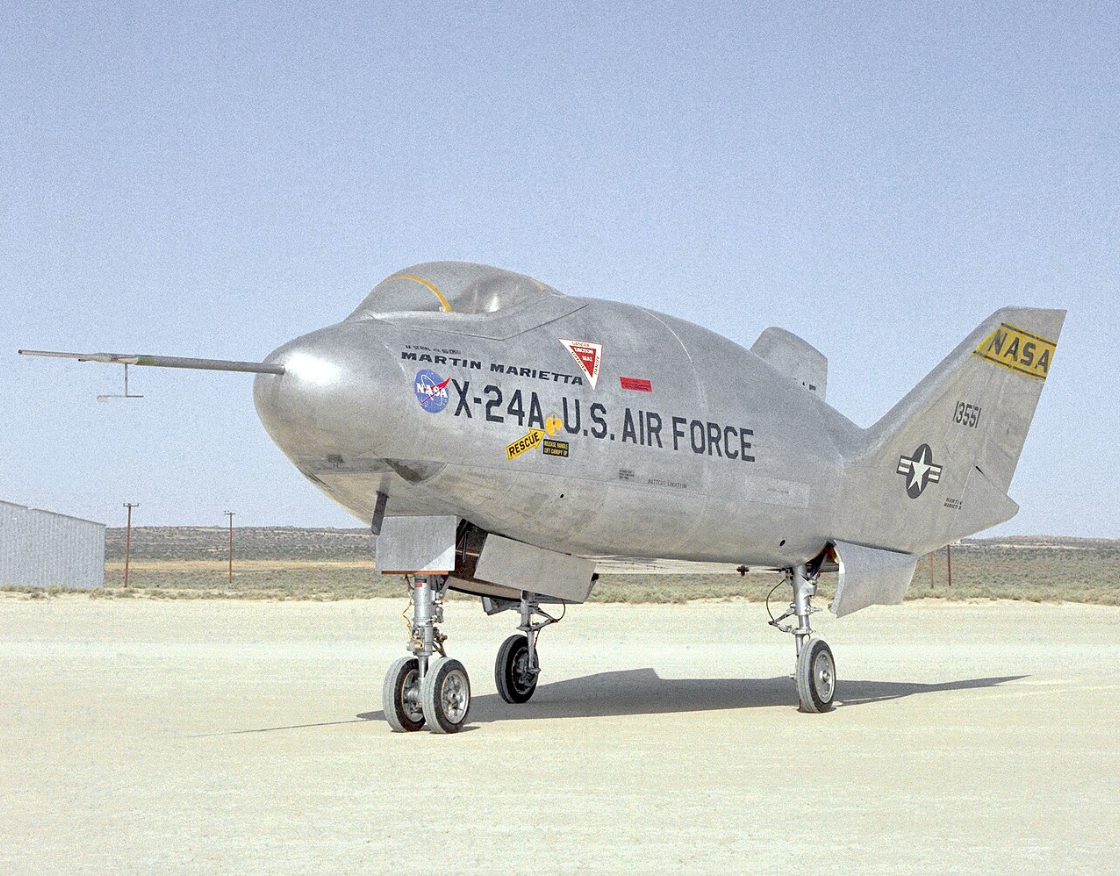Airplanes Without Wings?
When you think of an airplane, you would expect a certain body plan. This entails a cockpit, engine/s, a tail, wheels, a body, and most importantly, wings, all engineered to create the perfect flying machine. However, engineers have always pondered one seemingly questionable question, “What if we clipped the wings off?”
To dissect such a crazy idea, how an airplane’s wings make it fly in the first place must be understood. To recall, lift is the force generated by directing air downwards. The wings do this by their shape, which forces air flowing both above and below it to the ground. By Newton’s Third Law (you should remember this), this lifts the airplane up.
Wait, wouldn’t a plane without wings just drop out of the sky due to the lack of lift then? Yes! But such a machine will not drop and shatter like an egg. Instead, as Woody exclaimed, it will be “falling with style.”
The Martin X-24A, one of six NASA ‘lifting body’ prototypes.
In the 1950s and 60s, NASA was stuck with a conundrum. What is the best shape for a missile nose cone to re-enter Earth’s atmosphere? Dr. Alfred J. Eggers Jr. and H. Julian Allen together replied with a radical new schematic for the aircraft, wherein instead of the wings, the bluntness of the nose and the roundness of the fuselage itself generate lift. As such, a reentry vehicle with this design can easily glide, safely maneuver, and gently land in-atmosphere at a landing strip, with the added bonus of high efficiency at high speeds. The ‘lifting body’ was born.
The Wainfan FMX-4 Facetmobile shares many similarities to the nostalgic ‘crush gear,’ both in its angular shape and its homemade construction.
In total, NASA developed six ‘lifting body’ prototypes and tested them into the 1970s. In terms of lifting bodies, however, none can top the famed Space Shuttle. With its ability to both launch into space and land unscathed, it is no wonder that this masterpiece in engineering has transcended the Administration’s testing grounds into becoming a global icon of space travel.
To conclude, even in the world of engineering, where the tenets of logic, mathematics, science, and reasoning seemingly reign supreme, sometimes even the most contradictory ideas can bear fruit. Sure, maybe the idea of designing a plane without wings sounds really, really dense, but who is to say it will not work unless it has been tried? So don’t stop experimenting, tinkering with the attributes of your prototypes. Who knows, you might inspire the next trailblazing space shuttle.
Sources:
https://www.grc.nasa.gov/www/k-12/VirtualAero/BottleRocket/airplane/lift1.html
https://www.grc.nasa.gov/www/k-12/VirtualAero/BottleRocket/airplane/right2.html
https://www.nasa.gov/aeronautics/aircraft/lifting-bodies/
https://www.nasa.gov/centers-and-facilities/langley/the-aeronautics-of-the-space-shuttle/




